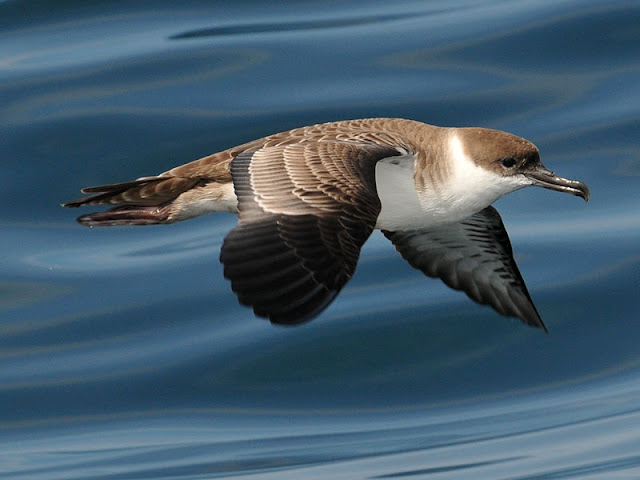Chris’s quest for bird
photographs turned up trumps a couple of years ago; his pictures of a Great Shearwater are
simply beautiful. It took a great deal of effort and carbon to obtain, since he
needed to be 40 miles off Land’s End, but I know he believes it was worthwhile.
From just about every birder I
speak to now and online, I pick up reports of birds on the move. I read of local ringers getting big catches of Warblers, Wheatears turning
up in gardens, Spotted Flycatchers appearing from nowhere in unlikely places, Willow Warblers feeding on the rocky shore and Terns moving south along the
coast. It’s that time of year when just about anything can turn up anywhere and
a rare bird raises the pulse of twitchers. If one is prepared to spend enough
time and money, a great many vagrants can be seen in
these islands at this time of year, but it’s not the unusual that
excites me, more the whole concept of migration embedded in such fragile
creatures.
There are lots of waders and
seabirds moving through too. At the Wetlands Centre this morning the tides
pushed hundreds of Curlews, Godwits, Redshanks and Greenshanks close to the
hides and good numbers of Terns patrolled the beaches to the west. Off a nearby
headland there are Fulmars, Gannets, Kittiwakes and more. Reports of a Baird's Sandpiper quickened the pulses of many local birders in the hide, but I stayed put, preferring to watch the
Even though we’re near the peak
of this great exodus, I shall have to hang on until late September for my
biggest thrill of the autumn, when thousands of Swallows move steadily around
the bay and head off south over the lighthouse. This miracle of visual mass migration
is what does it for me.



















